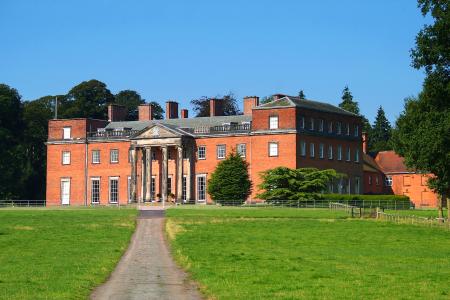From stately manors, to ancient ruins, and historic high streets - these villages are rich in heritage and culture.
Brewood and Bishops Wood
Brewood is an ancient market town which flourished in Anglo-Saxon times and to this day, remains a historic location.
Its parish church has a long history, set in the centre of the village surrounded by houses many centuries old, as can be seen by their well-kept appearance from a bygone era.
Catholic church St Mary’s is also worthy of note, being a classic of the English Gothic style. Its designer, Augustus Welby Pugin, is regarded as the most influential architect of the early Victorian era.
Its quaint high street today has developed with conscious respect for the past. Brewood cemented its reputation for strong community spirit by winning both the Staffordshire Community Spirit and the Best Kept Large Village awards.
The awards are testimony to how residents and businesses co-operate for the good of the village which stays clean and attractive all year round.
Brewood and the wider area is steeped in history.
Bishops Wood was once home to two priories, Blackladies and Whiteladies - with much of Whiteladies’ structure surviving the dissolution. Today its haunting profile features in many photographs.
Nearby Boscobel House, also at Bishops Wood, is famous for its priest holes and The Royal Oak tree in which Charles II hid from persecution. A descendant of the tree remains in the grounds.
Local family the Giffards built the house, which has since been handed over to the care of English Heritage for future generations.
The family traces its association with Brewood back to 1178 and has never strayed from the parish.
Their current home is nearby Chillington Hall which, though privately-owned, has regular events open to the public. A visit offers a fascinating insight into the family’s dating back to the Norman conquest.
Coven
Coven is another beautiful village steeped in history, recorded in the Domesday book in 1086 - and well worth taking the time to explore.
In many ways Coven is best seen by foot - and the weekly Rainbow Health Walks provide a great opportunity to do just that.
Part of the South Staffordshire Walking Programme, the walks begin at the Rainbow Inn every Monday at 11am, and are usually between one and two miles (up to an hour), followed by coffee and a chat afterwards.
St Paul’s Church in the village is Grade Two listed, having been built in 1857 – and is among a range of historic sites and buildings in Coven.
Among the assets situated in Coven is large playing field The Bronte, popular with families and dog walkers alike.
Situated just outside of the main village is the national award-winning Three Hammers golf complex which offers a driving range and a 15-hole par three golf course. There is also a dinosaur-themed crazy golf attraction and a popular bar and bistro on site.
Blymhill
Blymhill is another tranquil location popular with walkers; the area being criss-crossed by many public footpaths.
Much life is centred on the modern facility that is Blymhill and Weston-Under-Lizard Village Hall. Situated next to the pretty St Mary’s Church, it is widely used for a range of milestone occasions.
It has a very active sports and social club as well, as other regular activities including a monthly film club.
Blymhill also has its own historic mansion in nearby Weston Park, a 17th Century country manor with over 1,000 acres of Capability Brown parkland.
The nationally-renowned landmark plays host to a variety of festivals and events throughout the year.
Weston Park is worth a visit just to stroll around its parkland. Capability Brown was famous for adding cameo pleasure grounds to his parklands and Weston is no exception.
Temple Wood, Shrewsbury Walk, The Rose Garden, Italian Gardens and Formal Gardens are beautiful vignettes, and each is worth a visit.
Weston Park also boasts an outdoor adventure playground, a miniature railway, plus a café, art gallery and restaurant.
The house itself is renowned for its Victorian library furnished with over 3,000 books. Its significant art collection also houses one of the most important collections of Van Dyck portraits.
